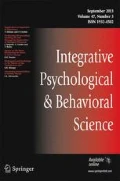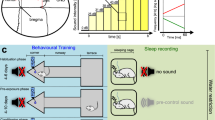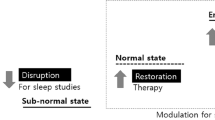Abstract
Neurophysiological studies in cats have established a functional relationship between waking 12–15 Hz sensorimotor cortex rhythmic EEG activity (the sensorimotor rhythm or SMR) and a similar pattern during sleep, the sleep spindle. Both result from oscillatory thalamocortical discharge involving ventrobasal thalamus and sensorimotor cortex, and both are associated with a state of suppressed motor excitability. Enhancement of the SMR with operant conditioning methods in the cat clearly led to reduced seizure susceptibility. The experimental application of this approach to seizure control in epileptics has resulted in (A) evidence that EEG patterns can be manipulated significantly in man with operant conditioning, (B) suggestive observations concerning a potential component of pathology in epilepsy, and (C) strong preliminary evidence that SMR operant conditioning in epileptics is specifically therapeutic.
Current research has focused upon the EEG during sleep in epileptics with primary motor symptomatology. This measure often reveals several hard signs of pathology. These include the presence of abnormal activity in the 4–7 Hz frequency band and the absence or disturbance of activity in the 11–15 Hz frequency band. Power spectral analysis is being utilized to quantify these sleep EEG components in five groups of epileptic patients, studied with different frequency patterns rewarded in an A-B-A design which provides for counterbalancing of order effects. Initial laboratory training is followed by 9–12 months of training at home with portable feedback equipment. Reward contingencies are reversed within each group at approximately three month intervals. Clinical EEG data, blood anticonvulsant measures and patient seizure logs supplement sleep EEG data obtained before training and after each phase of the design. Early results have again indicated specific therapeutic benefits following training of high frequency rhythmic central cortical activity.
Similar content being viewed by others
References
Babb, M. I. and Chase, M. H.: Masseteric and digastric reflex activity during conditioned sensorimotor rhythm.Electroenceph. Clin. Neurophysiol.,36:357, 1974.
Bickford, R., Bellinger, T. W., Fleming, N., and Steward, L.: The compressed spectral array (CSA): a pictorial EEC.Proc. Biomed. Symp., San Diego,3:365, 1972.
Buchwald, J. S. and Eldred, E.: Relations between gamma-efferent discharge and cortical activity.Electroenceph. Clin. Neurophysiol.,13:234, 1961.
Chase, M. H. and Harper, R. M.: Somatomotor and visceromotor correlates of operantly conditioned 12–14 c/sec sensorimotor cortical activity.
Efron, R.: The effect of olfactory stimuli in arresting uncinate fits.Brain,79: 267–281, 1956.
Efron, R.: The conditioned inhibition of uncinate fits.Brain,80:251, 1957.
Forster, F. M., Ptacek, L. J., and Peterson, W. G.: Auditory clicks in extinction of stroboscope induced seizures.Epilepsia,6:217, 1965.
Forster, F. M.: Conditioning in sensory evoked seizures.Cond. Reflex,1:224, 1966.
Forster, F. M.: Condition reflexes and sensory evoked epilepsy: the nature of the therapeutic process.Cond. Reflex,4:103, 1969.
Gondeck, A. R. and Smith, J. R.: Dynamics of human sleep sigma spindles.Electroenceph. Clin. Neurophysiol.,37:293, 1974.
Guerrero-Figueroa, R., Barros, A., and De Balbian Verster, F.: Some inhibitory effects of attentive factors on experimental epilepsy.Epilepsia,4:225, 1963.
Hongo, T. K., Kubota, K., and Shimazu, H.: EEG spindle and depression of gamma motor activity.J. Neurophysiol.,26:568, 1963.
Howe, R. C. and Sterman, M. B.: Somatosensory system evoked potentials during waking behavior and sleep in the cat.Electroenceph. Clin. Neurophysiol.,34:605, 1973.
Jasper, H. H.: Diffuse projection systems: the integrative action of the thalamic reticular system.Electroenceph. Clin. Neurophysiol.,1:405, 1949.
Kooi, Kenneth A.:Fundamentals of Electroencephalography. New York, Harper and Row Inc., 1971.
Kuhlman, W. N. and Allison, Truett.: EEG feedback training in the treatment of epilepsy: some questions and some answers.Pav. J. Biol. Sci., in press.
Mason, J. R.: Continuous Fast Fourier transform. DECUS #12–23, Digital Equipment Users Society, 1970.
Rechtschaffen, A. and Kales, A.:Manual of Standardized Terminology, Techniques and Scoring System for Sleep Stages of Human Subjects. Washington, D.C., U.S. Government Printing Office, 1968.
Roth, S. R., Sterman, M. B., and Clemente, C. D.: Comparison of EEG correlates of reinforcement, internal inhibition, and sleep.Electroenceph. Clin. Neurophysiol.,23:509, 1967.
Rougeul, A., Letalle, A., and Corvisier, J.: Activite rhythmique du cortex somesthesizue primaire in relation avec I’immobilite chex le chat libre eveille.Electroenceph. Clin. Neurophysiol.,33:23, 1972.
Rouse, L. O.: Conditioned inhibition of audiogenic seizures in DBA/2 mice.In S. Franklin (Ed.):Varieties of of Psychology. Fresno, Calif., Fresno State College, 1971.
Sterman, M. B.: Effects of brain surgery and EEG operant conditioning on seizure latency following monomethylhydrazine intoxication in the cat.Exp. Neurol., in press, 1976.
Sterman, M. B. and Friar, L.: Suppression of seizures in an epileptic following sensorimotor EEG feedback training.Electroenceph. Clin. Neurophysiol.,33:89, 1972.
Sterman, M. B., Howe, R. C., and Macdonald, L. R.: Facilitation of spindleburst sleep by conditioning of electroencephalographic activity while awake.Sciene,167:1146, 1970.
Sterman, M. B., Knauss, B. A., Lehmann, D., and Clemente, C. D.: Circadian sleep and waking pattenrs in the laboratory cat.Electroenceph. Clin. Neurophysiol.,19:509, 1965.
Sterman, M. B., LoPresti, R. W., and Fairchild, M. D.: Electroencephalo-graphic and behavioral studies of monomethylhydrazine toxicity in the cat.Technical Report AMRL-TR-69-3, Wright-Patterson Air Force Base, Ohio, Air Systems Command, 1969.
Sterman, M. B., Macdonald, L. R., and Stone, R. K.: Biofeedback training of the sensorimotor EEG rhythm in man: effects on epilepsy.Epilepsia,15: 395, 1974.
Sterman, M. B. and Wyrwicka, W.: EEG correlates of sleep: evidence for separate forebrain substrates.Brain Res.,6(1): 143, 1967.
Sterman, M. B., Wyrwicka, W., and Roth, S. R.: Electrophysiological correlates and neural substrates of alimentary behavior in the cat.In J. P. Morgane and M. Wayner (Eds.),Neural Regulation of Food and Water Intake, New York Ann. N. Y. Acad. Sci., 1969.
Stevens, J. R.: Electroencephalographic studies of conditional cerebral responses in epileptic subjects.Electroenceph. Clin. Neurophysiol.,12:431, 1960.
Stevens, J. R.: Endogenous conditioning to abnormal cerebral electrical transients in man.Science,137:974, 1962.
Stevens, J. R., Milstein, V. M., and Dodds, S. A.: Endogenous spike discharges as conditioned stimuli in man.Electroenceph. Clin. Neurophysiol.,23:57, 1967.
Wyrwicka, W. and Sterman, M. B.: Instrumental conditioning of sensorimotor cortex EEG spindles in the waking cat.Physiol. Behav.,3:703, 1968.
Author information
Authors and Affiliations
Additional information
The work described here was completed as of November, 1975, and some of its components have been incorporated into subsequent reports.
Supported by the Veterans Administration and by NIH-NINDS Grant #5 ROI NS 10726-02.
Rights and permissions
About this article
Cite this article
Sterman, M.B. Sensorimotor EEG operant conditioning: Experimental and clinical effects. Pav. J. Biol. Sci. 12, 63–92 (1977). https://doi.org/10.1007/BF03004496
Issue Date:
DOI: https://doi.org/10.1007/BF03004496




